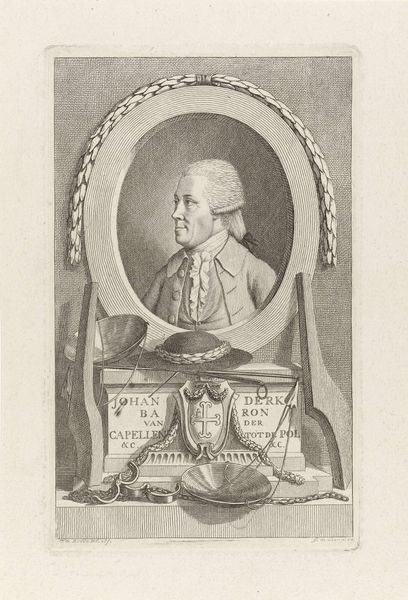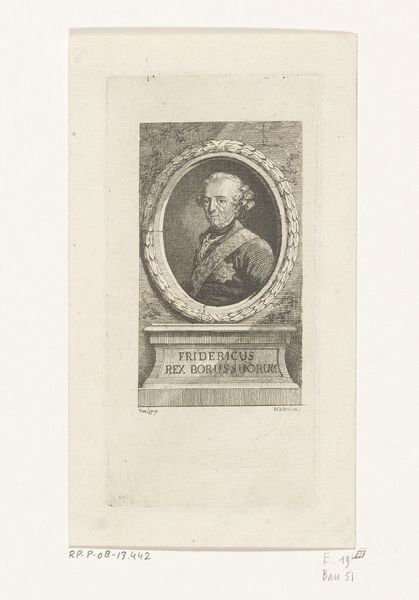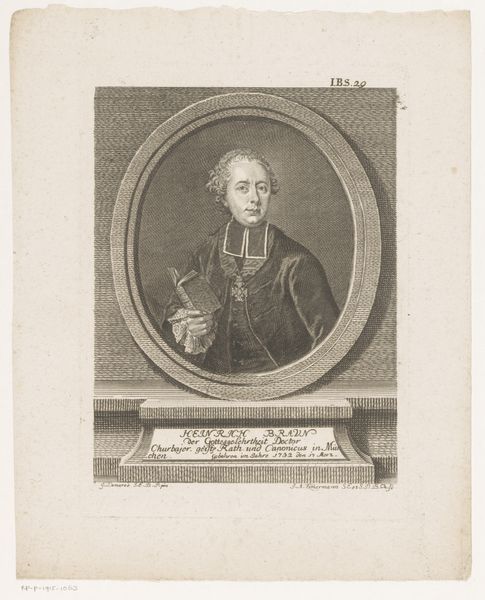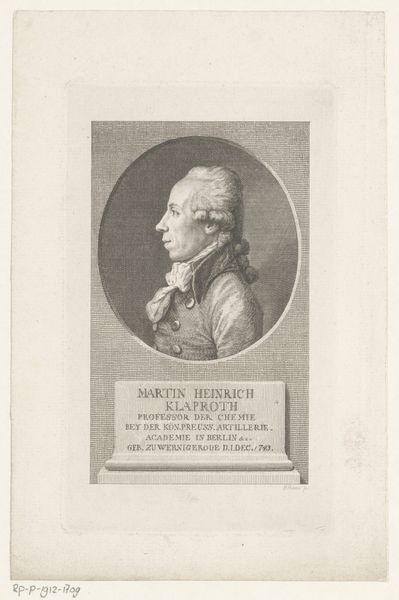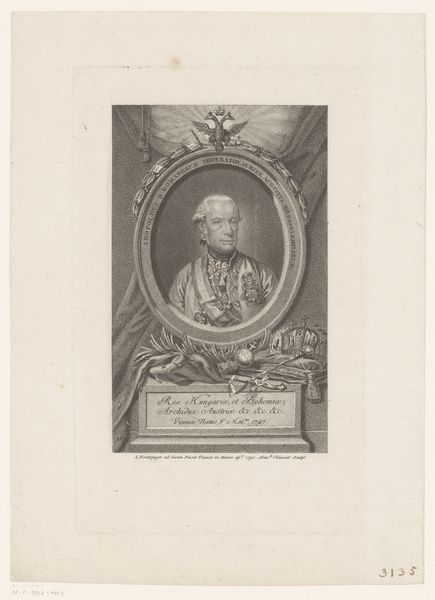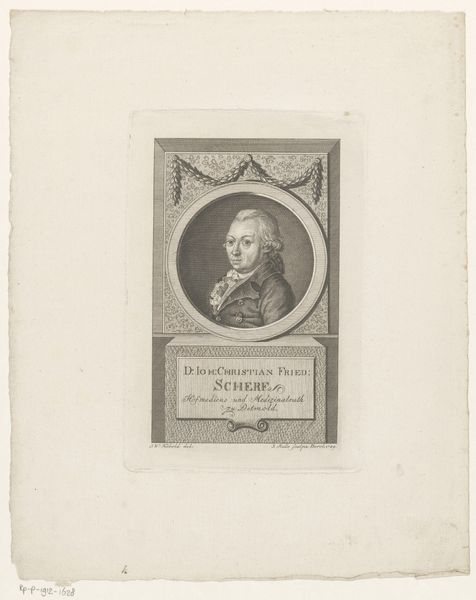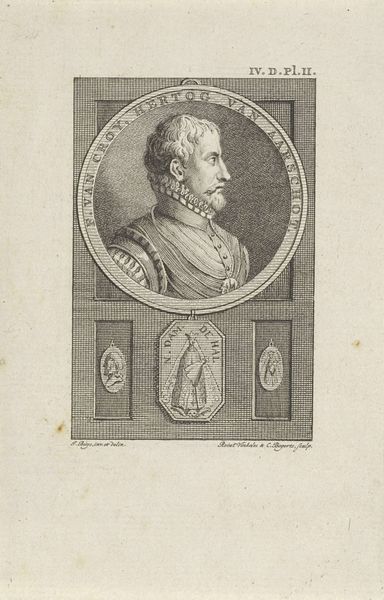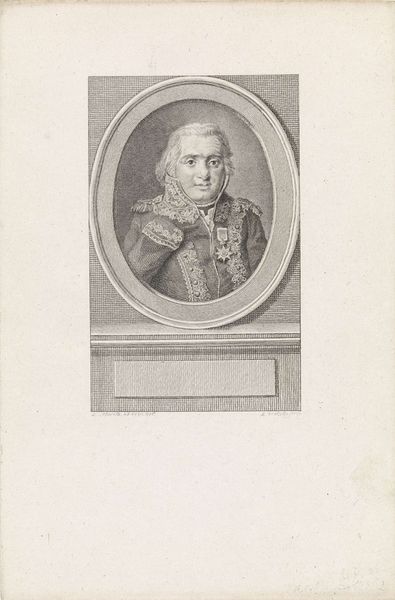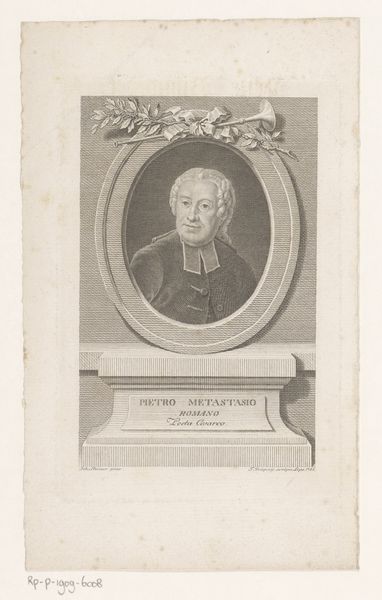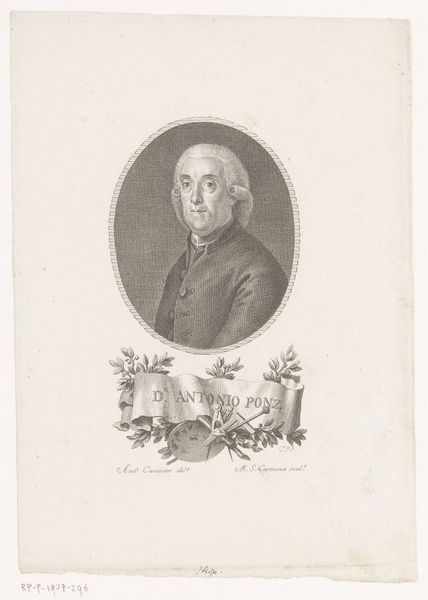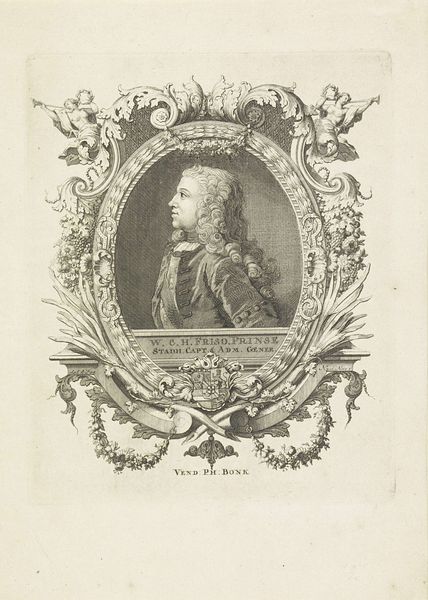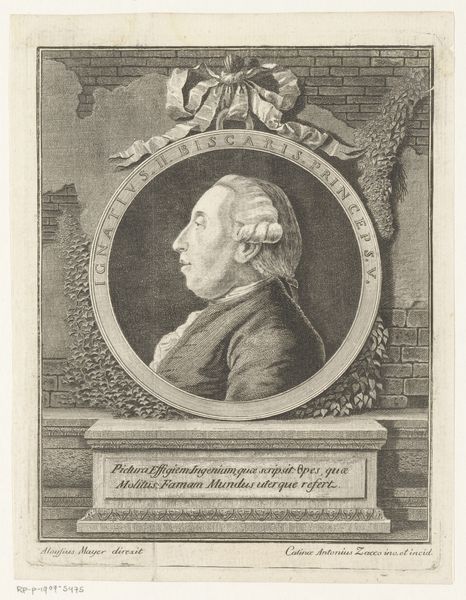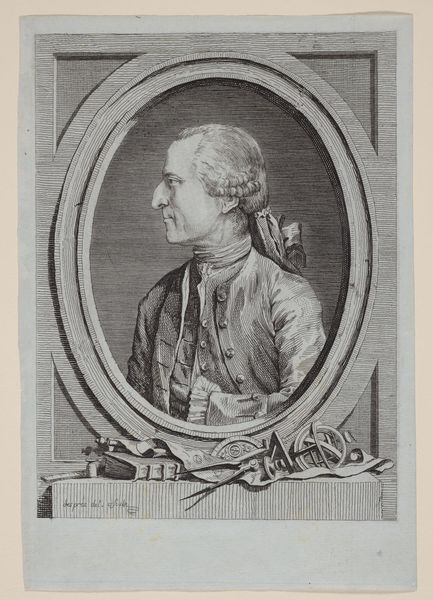
Dimensions: height 142 mm, width 95 mm
Copyright: Rijks Museum: Open Domain
Curator: This engraving presents a study of identity and power. LÉonard Jéhotte created this portrait, titled "Portret van Gideon Ernest," sometime between 1782 and 1851. What strikes you initially? Editor: The somber mood, certainly. Even without color, you sense a gravity, a stoicism etched into the subject's face. The precision of the lines emphasizes a controlled intensity, don't you think? Curator: Absolutely. Consider the subject, identified as Gideon Ernest, Baron de Loudon. The sword and laurel, classic symbols of military might and triumph, alongside his powdered wig, signal his elite social standing within a power structure deeply implicated in issues of class and privilege. Editor: And the laurel wreath atop the helmet reinforces a cultural continuity, echoing ancient Roman ideals of the virtuous soldier, while also evoking ideas about civic duty and public service. The engraving method lends a timeless quality. Curator: Timeless, yet deliberately constructed. Jéhotte is making choices, framing his subject, to highlight aspects of masculinity, social role, and the performance of status. It compels me to ask, who is Gideon Ernest within the historical context, and whom is this portrait for? Editor: Indeed. The portrait is not just a likeness, it is a construct—a cultural object. Those meticulously engraved details tell a very specific story about authority, drawing on established visual codes to transmit clear messages about status and achievement. Curator: To further explore, the very medium of engraving becomes crucial, reproduced and distributed, embedding those symbols and solidifying ideologies… How can we see those symbols from the view point of someone historically disenfranchised by such power? Editor: That’s the challenging question, isn't it? How do we unpack the layers of embedded meaning and disrupt this carefully constructed narrative of power through historical context, asking who had the privilege to create and interpret these images? The helmet evokes protection and courage, perhaps obscuring deeper ambiguities about what it meant to be a leader then. Curator: Such a crucial, intersectional perspective. Editor: Ultimately, it leaves me pondering how the artist manipulates established visual codes to create an enduring impression, but also, how cultural memory persists to this very day.
Comments
No comments
Be the first to comment and join the conversation on the ultimate creative platform.
